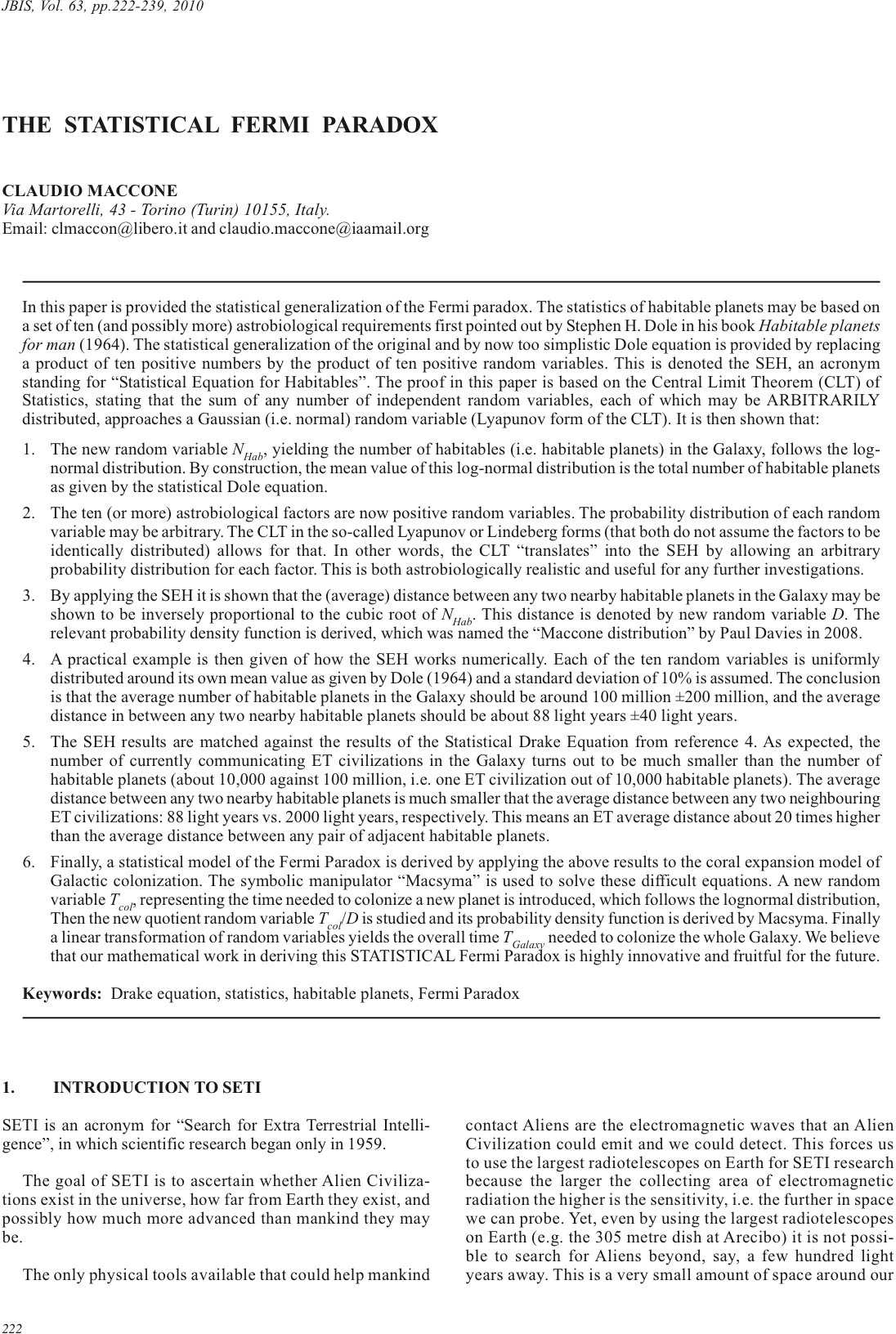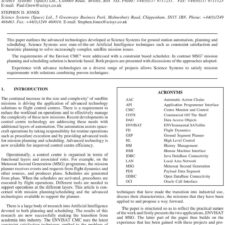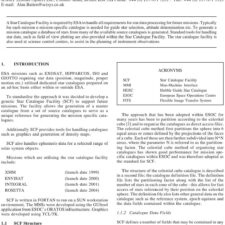The Statistical Fermi Paradox
£5.00
C. Maccone (2010), JBIS, 63, 222-239
Refcode: 2010.63.222
Keywords: Drake equation, statistics, habitable planets, Fermi Paradox
Abstract:
In this paper is provided the statistical generalization of the Fermi paradox. The statistics of habitable planets may be based on a set of ten (and possibly more) astrobiological requirements first pointed out by Stephen H. Dole in his book Habitable planets for man (1964). The statistical generalization of the original and by now too simplistic Dole equation is provided by replacing a product of ten positive numbers by the product of ten positive random variables. This is denoted the SEH, an acronym standing for “Statistical Equation for Habitables”. The proof in this paper is based on the Central Limit Theorem (CLT) of Statistics, stating that the sum of any number of independent random variables, each of which may be ARBITRARILY distributed, approaches a Gaussian (i.e. normal) random variable (Lyapunov form of the CLT). It is then shown that:
1. The new random variable NHab, yielding the number of habitables (i.e. habitable planets) in the Galaxy, follows the log- normal distribution. By construction, the mean value of this log-normal distribution is the total number of habitable planets as given by the statistical Dole equation.
2. The ten (or more) astrobiological factors are now positive random variables. The probability distribution of each random variable may be arbitrary. The CLT in the so-called Lyapunov or Lindeberg forms (that both do not assume the factors to be identically distributed) allows for that. In other words, the CLT �translates� into the SEH by allowing an arbitrary probability distribution for each factor. This is both astrobiologically realistic and useful for any further investigations.
3. By applying the SEH it is shown that the (average) distance between any two nearby habitable planets in the Galaxy may be shown to be inversely proportional to the cubic root of NHab. This distance is denoted by new random variable D. The relevant probability density function is derived, which was named the �Maccone distribution� by Paul Davies in 2008.
4. A practical example is then given of how the SEH works numerically. Each of the ten random variables is uniformly distributed around its own mean value as given by Dole (1964) and a standard deviation of 10% is assumed. The conclusion is that the average number of habitable planets in the Galaxy should be around 100 million �200 million, and the average distance in between any two nearby habitable planets should be about 88 light years �40 light years.
5. The SEH results are matched against the results of the Statistical Drake Equation from reference 4. As expected, the number of currently communicating ET civilizations in the Galaxy turns out to be much smaller than the number of habitable planets (about 10,000 against 100 million, i.e. one ET civilization out of 10,000 habitable planets). The average distance between any two nearby habitable planets is much smaller that the average distance between any two neighbouring ET civilizations: 88 light years vs. 2000 light years, respectively. This means an ET average distance about 20 times higher than the average distance between any pair of adjacent habitable planets.
6. Finally, a statistical model of the Fermi Paradox is derived by applying the above results to the coral expansion model of Galactic colonization. The symbolic manipulator �Macsyma� is used to solve these difficult equations. A new random variable Tcol, representing the time needed to colonize a new planet is introduced, which follows the lognormal distribution, Then the new quotient random variable Tcol/D is studied and its probability density function is derived by Macsyma. Finally a linear transformation of random variables yields the overall time TGalaxy needed to colonize the whole Galaxy. We believe that our mathematical work in deriving this STATISTICAL Fermi Paradox is highly innovative and fruitful for the future.





